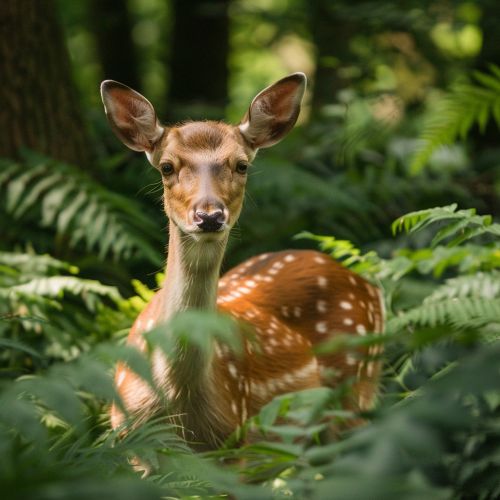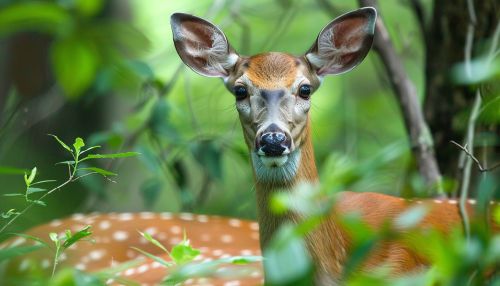Deer
Taxonomy and Evolution
Deer are part of the order Artiodactyls, which includes hoofed animals with an even number of toes. They belong to the family Cervidae, which includes about 43 species grouped into 16 genera. The exact classification of deer has been a subject of debate among taxonomists, with some proposing different arrangements based on molecular phylogenetics.


Deer evolved from ancestral ungulates during the Oligocene epoch, around 34 million years ago. The earliest deer-like animals were small, short-legged creatures that lived in forests. Over time, they evolved into the highly specialized forms we see today, with long legs adapted for fast running and antlers for male-male competition.
Anatomy and Physiology
Deer are characterized by their slender, compact bodies, long, powerful legs, and short tails. They have a unique digestive system, classified as a ruminant, which allows them to consume a variety of plant materials. The Ruminant system involves a four-chambered stomach, which uses bacteria to break down complex plant materials through a process of fermentation.
One of the most distinctive features of deer is their antlers, which are present in males (and occasionally in females, depending on the species). Antlers are made of bone and are shed and regrown each year. This process is regulated by hormonal changes that are linked to the breeding season.
Behavior and Ecology
Deer are highly adaptable animals and can be found in a variety of habitats, from the dense forests of North America to the open plains of Africa. They are primarily herbivores, feeding on a diet of leaves, shoots, and grasses. Some species also consume fruits and nuts when available.
Deer are crepuscular, meaning they are most active during dawn and dusk. They are also known for their highly developed sense of hearing and smell, which they use to detect predators and communicate with each other.
Human Interaction
Humans have had a long history of interaction with deer, from hunting them for their meat and hides to domesticating them for agricultural purposes. In many cultures, deer have significant symbolic and spiritual value. However, human activities have also led to habitat loss and population declines in many deer species.
See Also
References
1. Geist, V. (1998). Deer of the World: Their Evolution, Behaviour, and Ecology. Stackpole Books. 2. Putman, R. (1988). The Natural History of Deer. Comstock Publishing. 3. Clutton-Brock, J. (1978). A Natural History of Domesticated Mammals. Cambridge University Press.
